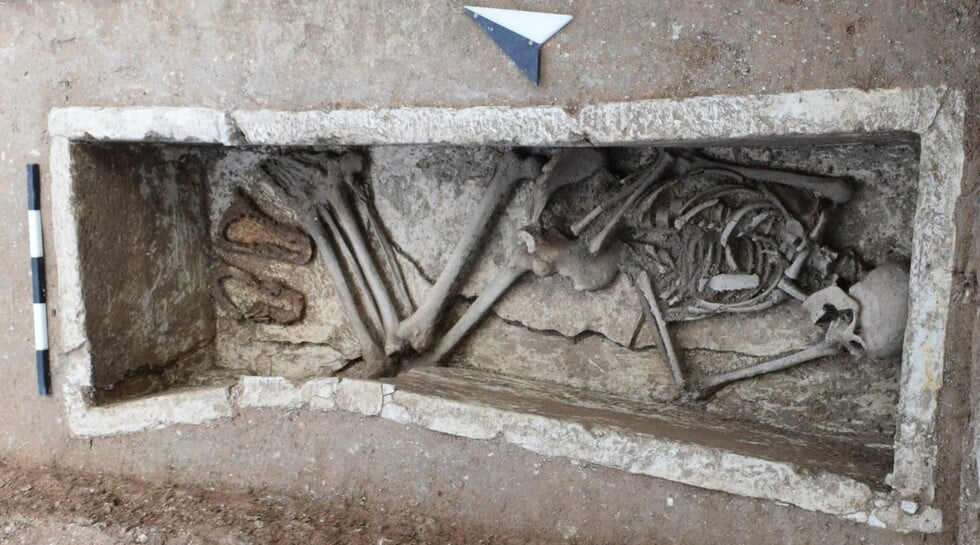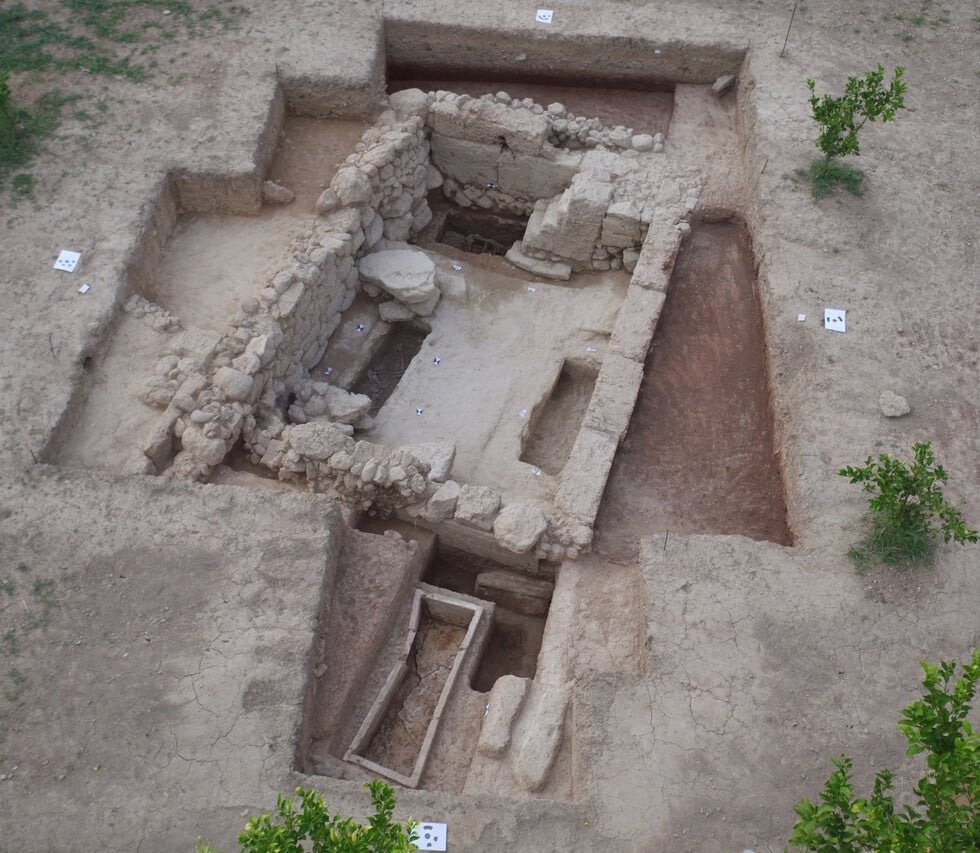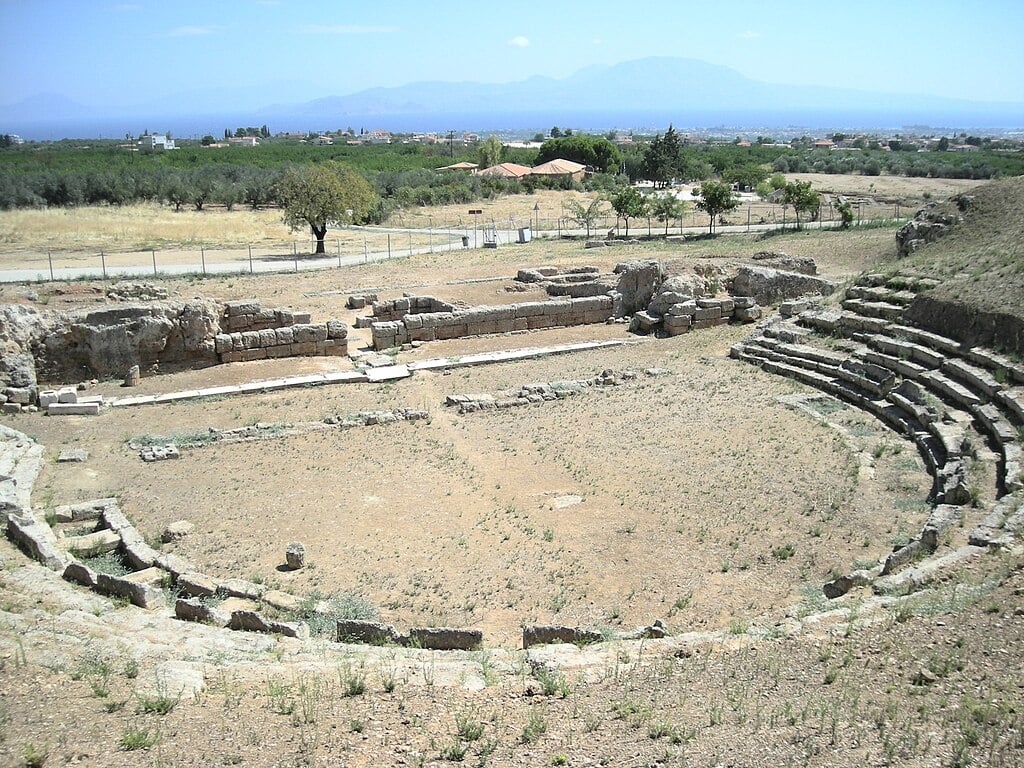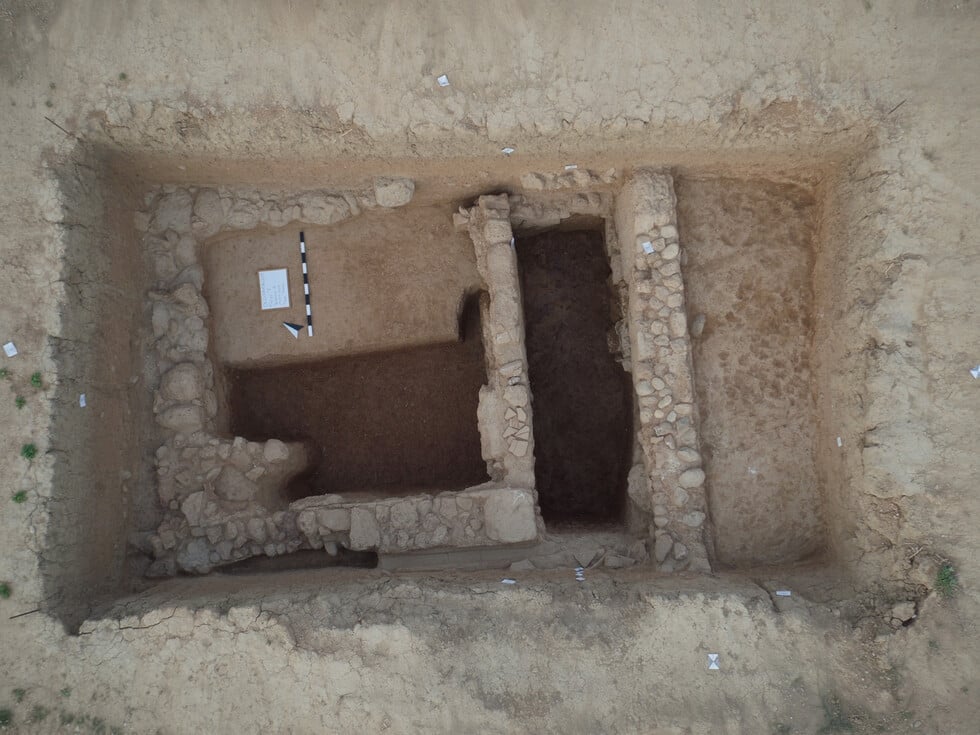
The ancient Greek city of Sicyon located in northern Peloponnese may not be as well known as other city-states but excavations in the last few years are bringing to light important clues about its history.
One of the most spectacular discoveries was a 2,500 grave containing the remains of a man. Archaeologists were surprised to find a pair of sandals laid next to the skeleton.
The excavations up to now have not revealed the entire ancient city, but they have unearthed residential remains of the Classical and Late Classical periods, consisting of rooms of houses and parts of domestic workshops.
Pottery from the 6th century B.C. was discovered in addition to pebble mosaic floors, as well as walls clad in red and yellow plaster.

The archaeological site lies just west of the modern village of Sikyona (previously Vasiliko) between Corinth and Achaea. It includes the excavated area of the Agora of the Hellenistic and Roman city, the Theatre, the Stadium and the Roman Baths, which have been restored.
The theater of the Ancient Greek City of Sicyon

The theater was carved into a natural depression at the foothills of the Hellenistic Acropolis and dates back to the late 4th century B.C.
It consists of the Koilon, the Orchestra and the Scene (stage-building); the two vaulted passages at the sides of the Koilon, used for the entrance of the spectators, constitute unique examples of Hellenistic architecture.
During the Roman era, several adjustments were made to the building, especially the Scene.
With a seating area estimated at 122 meters (400 feet) wide and 58 meters (190 feet) deep, it is one of the largest theaters in the Peloponnese.
The present-day ruins at Sicyon are a faint reminder of the Romanized theater the historian Pausanias visited in the second century AD.
In his day, the historian Pausanias recorded the scene at Sicyon thus: “On the stage of the theater built under the citadel is a statue of a man with a shield, who they say is Aratus, the son of Cleinias. After the theater is a temple of Dionysus.”
Sadly, the “statue of Aratus,” as noted by Pausanias, has long since vanished, as have the columns and carved marble ornaments that once graced the theatre’s façade.
Sicyon became a democracy in the 3rd century BC
An ancient monarchy at the time of the Trojan War, the city was ruled by several tyrants during the Archaic and Classical periods and became a democracy in the 3rd century BC. Sicyon was celebrated for its contributions to ancient Greek art, producing many famous painters and sculptors.
In Hellenistic times it was also the home of Aratus of Sicyon, the leader of the Achaean League.

Sicyon was built on a low triangular plateau about 3 kilometers (two miles) from the Corinthian Gulf. Between the city and its port lay a fertile plain with olive groves and orchards.
The 4th Ephorate of Prehistoric and Classical Archaeology is responsible for all city excavations, as well as those in the surrounding area. Movable objects which were found at the site are now housed in the onsite Sicyon Museum, which opened in 2007.